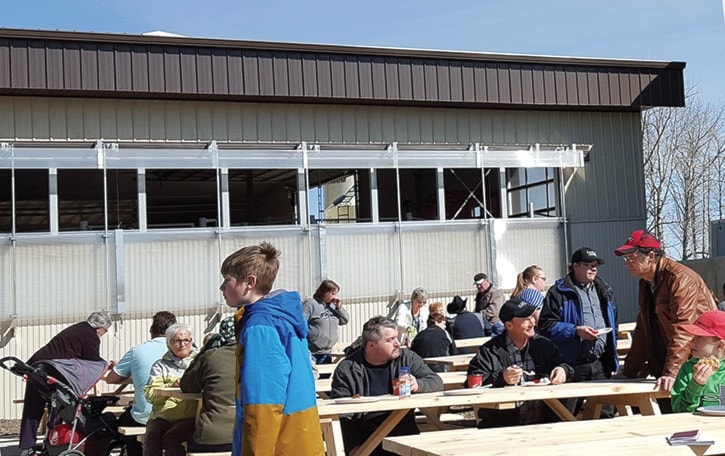Tuesday afternoon, March 29, the traffic was palpable towards south of Erskine as people headed to the open house hosted by the Hausteins and participate in the tour of one of the first aerobic flush barns in the province.
"We wanted our neighbours and family and friends to come and see what we have worked so hard to achieve," said Conlee Haustein, dairy manager at the barn. "The open house was also an opportunity for fellow dairy producers to come see our facility, compare ideas, and possibly incorporate something similar within their own operation."
People who attended the event were free to roam around the barn and view the aerobic lagoon at their leisure, with Haustein family members and various vendor representatives present to answer any questions that visitors might have had.
Lunch refreshments and doughnuts were provided for the public as they enjoyed a day out looking at the new facility.
"Our barn is different from most barns because we use two robotic milking machines to milk the 95 lactating cows, although the maximum capacity is 120 and we have an aerobic lagoon that is used to treat the manure from the barn, which is automatically flushed with the recycled lagoon water 24 times per day," said Haustein. "We wanted to have the open house with the hopes to show other dairy producers that not only can a flush barn work in Alberta but it can work very well."
Although the Hausteins have been milking in the new barn for 13 months, they are yet to see the full potential benefits.
"Our herd is 100 per cent Bavarian Fleckvieh cross-bred cows and are healthier, with their feet being in better shape, as manure is efficiently and effectively taken out of the barn as well as treated for three pennies per cow per day," added Haustein. "We have yet to see the full benefits of being able to irrigate this effluent on to the growing crops since we do not lose as many nutrients as you would in a typical lagoon, which is anaerobic."
According to Haustein, their cows are stronger, healthier and will last longer in the barn, yielding more dollars at the slaughter.
"Not to mention they are more feed efficient and give us more milk solids for what feed we give them, so considering all of this, they are more profitable," said Haustein. "Milk production has increased 40 per cent and labour costs have drastically been reduced over the old facility but on the flip side, operation costs have increased, with net gains being moderated."
Haustein said that in time, as loan principles are paid off, profits will improve which will make the facility even more competitive and efficient.
